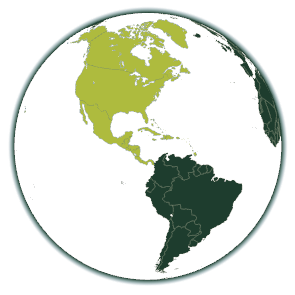Euphorbia maculata
Spotted spurge
Euphorbia maculata, also known as spotted spurge, is an herbaceous perennial plant that can reach a height of up to 45 cm. Its leaves are arranged oppositely, oval-lanceolate and up to 3.5 cm long. They are noticeable because of their purple-red spots on the underside. The plant has an upright, often red-spotted stem that secretes a white milky sap when damaged. The flowers are small and yellow-green and appear between June and October. The fruit is a three-part, spherical capsule containing brown seeds. Spotted spurge prefers sunny to partially shaded locations and shows a high tolerance to various soil conditions.
Types of damage
Region of origin
North America

Introduction vectors
Current distribution
Based on the FlorKart Database of the Federal Agency for Nature Conservation, as of 2013
Miscellaneous
Dispersion forecast
Indicates the proportion of land suitable for habitat under current and future climate conditions (2060-2080) under three emission scenarios (RCP26, RCP45 & RCP85).

powered by Advanced iFrame. Get the Pro version on CodeCanyon.
Habitat suitability under current climate conditions
These habitat suitability maps show for Euphorbia maculata where suitable habitat conditions exist.
The map on the left shows this for current climate conditions. Below this are maps for the time classes 2040-2060 and 2061-2080, in which three different emission scenarios can be selected.
The slider at the top left allows you to adjust the opacity of the map to make orientation easier.
By clicking on the respective quadrant, information on the environmental conditions present in it can be called up.
The methodology is explained here beschrieben.
powered by Advanced iFrame. Get the Pro version on CodeCanyon.
powered by Advanced iFrame. Get the Pro version on CodeCanyon.













